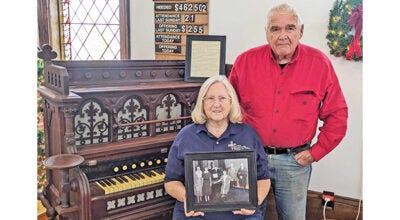Hemlock-killing bug in Berrien
Published 9:26 pm Thursday, April 5, 2012
LANSING — The Michigan Department of Agriculture and Rural Development (MDARD) confirmed an infestation of the hemlock woolly adelgid (HWA) in Berrien County. This is the first confirmation of HWA in Berrien County.
HWA is a small, aphid-like insect that uses its long, siphoning mouthparts to extract sap from hemlock trees. Native to eastern Asia, HWA was discovered in Virginia in 1951 and has since spread over an area from Georgia to Maine, decimating hemlock stands across much of the eastern U.S. Heavy infestations of HWA have killed trees in as little as four years.
The initial positive site in New Buffalo was discovered by a landscaper who reported his suspicion to the Michigan Department of Natural Resources (DNR).
DNR informed MDARD which initiated a survey of hemlocks trees within a half-mile of the positive site and second positive site was discovered. Surveys will continue in the area to determine the extent of the infestations. Minimally, infested trees will be removed and destroyed; and hemlock trees in the area surrounding the infested trees will be treated with an approved insecticide.
“More than 100 million hemlock trees are present in Michigan forests, providing valuable habitat for a diversity of animals, including birds, deer and fish. These trees are critical to the ecology and aesthetics of Michigan’s northern forests,” said Gina Alessandri, MDARD’s pesticide and plant pest management division director.
“These detections underscore the importance of citizen involvement in exotic pest detection. Without the report from an alert and conscientious individual, these detections may have gone unnoticed for months, or even years, making eradication of this devastating pest much more unlikely.”
The origin of these infestations is not known at this time. Work will be conducted by MDARD is to identify not only the source, but also other areas that may have been exposed to possible infestation. There are no known established populations of HWA anywhere else in Michigan.
“Nursery operators, landscapers and homeowners should never accept hemlock from quarantined areas, and never accept hemlock without proper certification,” Alessandri said. “Examine your hemlock for the presence of white, cottony masses on the underside of the branches where the needles attach. If you suspect HWA, contact MDARD immediately.”
People who live, work and play in the area of concern should be aware that the movement of hemlock materials (trees, branches and twigs) could spread HWA. At this time, hemlock materials should not be removed from the property from which they originate. Also, it is recommended that no hemlock trees be brought into the area of concern as they run the risk of becoming infested. The area of concern is roughly described as the area bounded by South Red Arrow Highway to the east, Townline Avenue to the north, Lake Michigan to the west and a line between the intersection of Arbor and Marquette Dr. and the intersection of U.S. Highway 12 and South Red Arrow Highway to the south.
A map showing the area of concern and more information on HWA can be found at www.michigan.gov/exoticpests.
Michigan law restricts the movement of hemlock into the state, and includes a complete ban on the movement of hemlock from infested areas.





